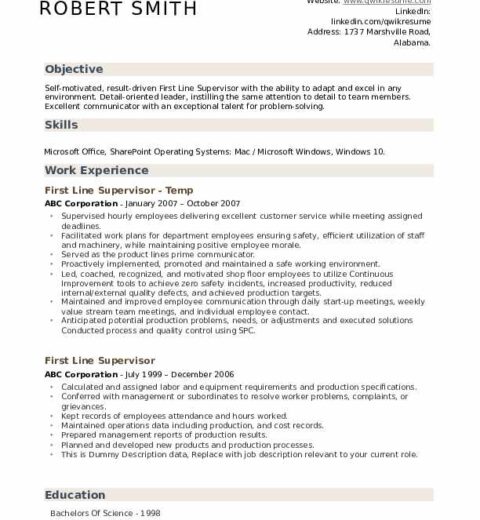Writing a resume can be a daunting task, especially in a competitive job market. Yet, a well-crafted resume is indispensable for effectively showcasing your skills, experiences, and qualifications to potential employers. This article will provide actionable advice, resources, and strategies that will equip you with the requisite knowledge to compose a compelling resume. Below, you will find a comprehensive guide encompassing the essential components of resume writing, pro tips, and common pitfalls to avoid.
Understanding the Purpose of a Resume
At its core, a resume serves as a marketing tool that summarizes your education, work history, and skills. It is designed to capture the attention of hiring managers, compelling them to invite you for an interview. Importantly, your resume should succinctly convey why you are the ideal candidate for the job rather than merely listing job titles and duties.
Researching the Job Description
Before you begin drafting your resume, meticulously analyze the job description for the role you are interested in. Identify keywords and phrases that are repeatedly mentioned, as these will guide your application. Tailoring your resume to align with these job-specific terms not only enhances your chances of passing Applicant Tracking Systems (ATS) but also addresses the core competencies sought by employers.
Choosing the Right Format
The format of your resume significantly affects its readability and overall impact. The three most common formats are chronological, functional, and hybrid. Each serves a unique purpose:
- Chronological Format: Best suited for individuals with a robust work history, this layout lists experiences in reverse chronological order.
- Functional Format: Ideal for those with gaps in employment or are changing careers, focusing more on skills rather than work history.
- Hybrid Format: A combination of the two, this format allows you to highlight relevant skills while presenting your work history.
Consider your unique situation while choosing the format that will best showcase your qualifications.
Crafting a Compelling Header
Your header should prominently feature your name, phone number, email address, and LinkedIn profile, if applicable. Some may choose to include a professional title beneath the name, directly aligning with the position for which they are applying. Ensure that your name stands out by using a larger font size and bold type to enhance visibility.
Writing an Engaging Summary or Objective Statement
Whether you opt for a summary or an objective statement will depend on your career stage. A summary is suitable for those with extensive experience, while an objective statement might better serve recent graduates or individuals pivoting careers. Your summary should encapsulate your professional persona, including key accomplishments and skills pertinent to the targeted role. Avoid a generic approach; instead, personalize it by mentioning the employer’s name and how you will add value to their organization.
Detailing Professional Experience
Under this section, list each job you’ve held, including your job title, the company name, location, and dates of employment. Focus on quantifiable achievements rather than mere responsibilities. Use action verbs such as ‘developed’, ‘implemented’, and ‘optimized’ to convey initiative and impact. Consider incorporating bullet points for readability, ensuring that points are concise but packed with information. For example:
- Implemented a new inventory management system that reduced costs by 20%.
- Developed marketing campaigns that increased web traffic by 50% within six months.
Utilizing numbers to illustrate your accomplishments lends credibility to your claims and captivates the reader’s attention.
Highlighting Education and Certifications
Your education section should include the degrees obtained, institutions attended, and corresponding dates. If you have relevant certifications — especially those explicitly stated in the job description — ensure they are prominently displayed. Format this section correctly, as higher education qualifications often take precedence over other achievements.
Skills Section: Key Competencies
Every resume should include a skills section that encapsulates both hard and soft skills. Hard skills are quantifiable abilities, such as language proficiency or technical know-how, while soft skills encompass interpersonal traits like leadership and communication. Tailor this section to reflect the skills mentioned in the job description, seamlessly blending them with your own expertise.
Keeping Up with Industry Standards
Stay abreast of trends within your industry; some sectors, like technology or creative fields, are more forgiving of unconventional formats. In contrast, more traditional sectors, such as finance or law, often prefer conservative approaches. Understanding the expectations of your target industry will inform your design, language, and overall presentation.
Proofreading: A Crucial Final Step
After drafting your resume, proofreading is paramount. Typos and grammatical errors can undermine your professionalism and attention to detail. Employ tools or services for spell-checking, but personal review is irrefutably essential. Consider asking a peer for feedback, as a fresh set of eyes can often catch errors that may have been overlooked.
Conclusion
Creating an impressive resume is not merely an exercise in listing experiences—it requires a thoughtful blend of strategy, insight, and presentation. By adhering to the aforementioned guidelines and consistently refining your approach, you will cultivate a resume that not only addresses the concerns of potential employers but also effectively positions you as a compelling candidate in the job market. Take the time to invest in this critical career document; your future could hinge on its effectiveness.




